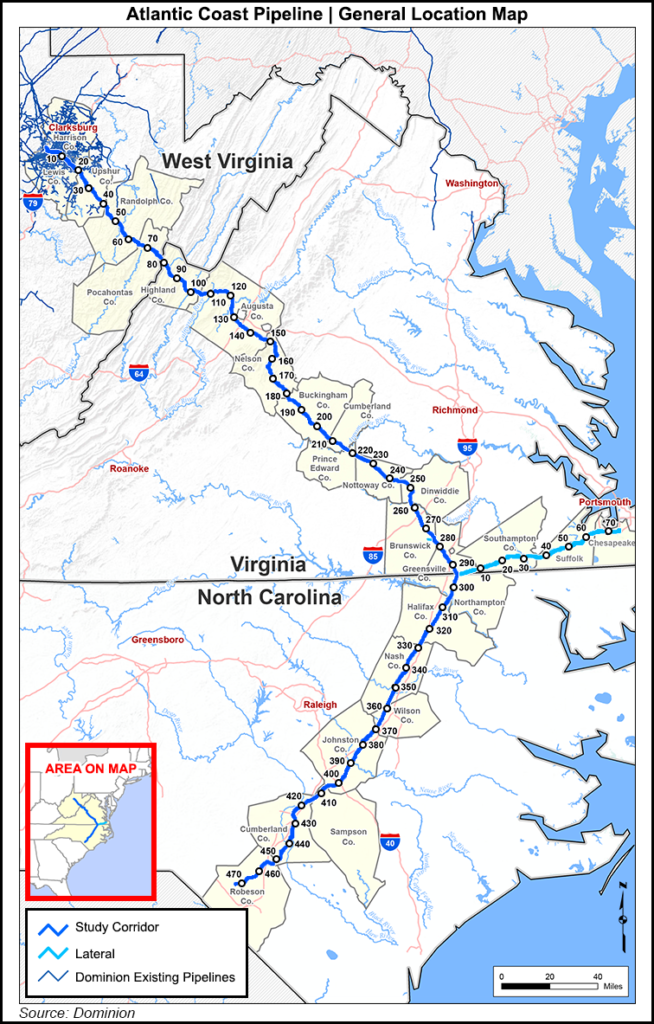Regulatory | Infrastructure | NGI All News Access | NGI The Weekly Gas Market Report
Atlantic Coast Pipeline Told to Rethink Forest Land Route
FERC has told the backers of the proposed Atlantic Coast Pipeline LLC (ACP) to provide alternative routes for the pipeline that would avoid crossing U.S. forest lands and that the project’s environmental impact statement (EIS) cannot advance without the information.

“…[T]hrough our consultations with the U.S. Forest Service (USFS) and our interpretation of the prescriptive-specific goals, objectives, standards, and guidelines listed in the respective Monongahela and George Washington National Forests’ Land and Resource Management Plans, we have determined that alternative routes to the south of the currently proposed ACP route may offer environmental advantages over the currently proposed route,” the Federal Energy Regulatory Commission said in a letter [CP15-555].
ACP in September applied to FERC for permission to build its 564-mile interstate pipeline that would carry Appalachian Basin natural gas to power generation and other markets in Virginia and North Carolina. The 1.5 Bcf/d pipeline is a joint venture led by Dominion (45%) with Duke Energy (40%), Piedmont Natural Gas (10%) and AGL Resources (5%). It would run from Harrison County, WV, southeast through Virginia with an extension to Chesapeake, VA, and south through central North Carolina to Robeson County. Pending regulatory approval, construction could begin in the second half of 2016 with in-service during the fourth quarter of 2018 (see Daily GPI, Sept. 18).
USFS filed more than 300 comments with FERC that primarily question the necessity of the ACP’s proposed pathway through the Monongahela and George Washington national forests (see Daily GPI, Aug. 5). The comments challenge the pipeline’s need to cross the forests, noting that the USFS prohibits the use of forestland simply because it would offer the builders lower costs and a more convenient route. Federal officials also questioned restoration efforts after the project is completed.
© 2024 Natural Gas Intelligence. All rights reserved.
ISSN © 1532-1231 | ISSN © 2577-9877 | ISSN © 1532-1266 |
